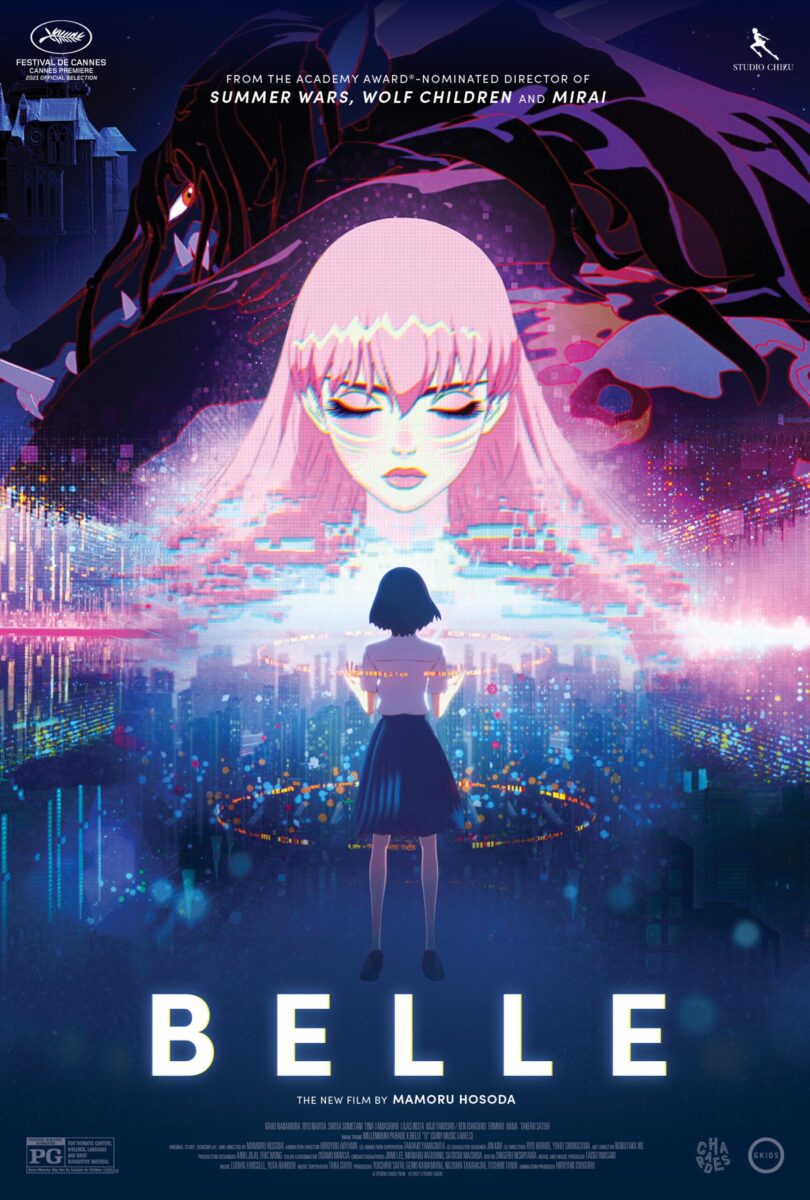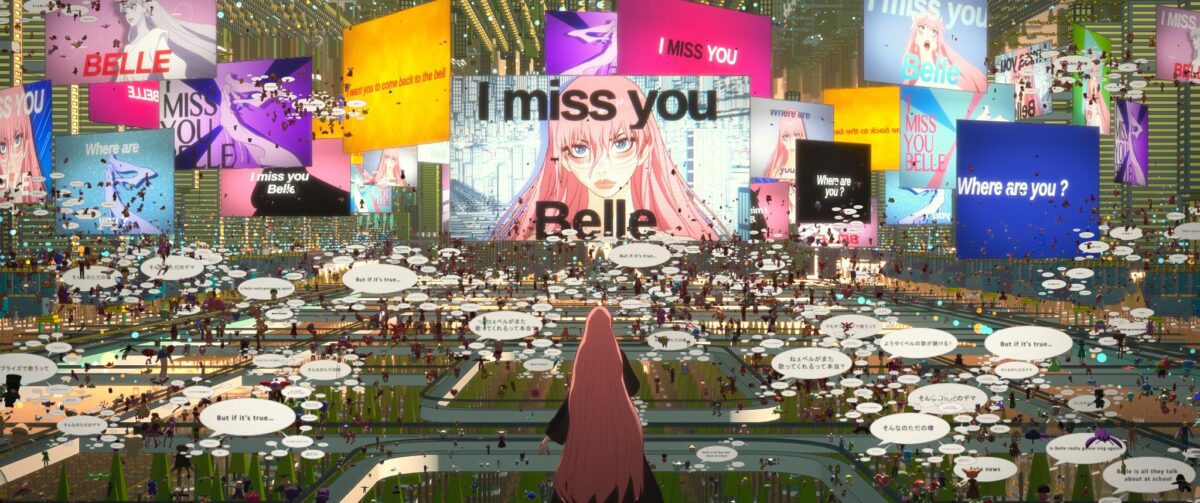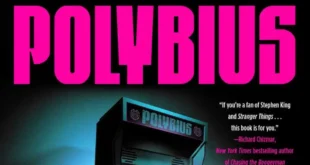In a time when everybody in America at least knows someone with Disney+, it’s becoming quite rare to find an individual unfamiliar with the story of the Beauty And The Beast. Many critics look at the original animated version to be the be-all, end-all telling of the story. Regardless, famed anime director Mamoru Hosoda took it upon himself to create a new telling, set in a near future world, with his own thematic and artistic influences. Does Hosoda’s Belle hold up, or is it just another telling of the same old story?

Synopsis for Belle:
Suzu is a shy, everyday high school student living in a rural village. For years, she has only been a shadow of herself. But when she enters U, a massive virtual world, she escapes into her online persona as Belle, a gorgeous and globally beloved singer. One day, her concert is interrupted by a monstrous creature chased by vigilantes. As their hunt escalates, Suzu embarks on an emotional and epic quest to uncover the identity of this mysterious “beast” and to discover her true self in a world where you can be anyone.
As most people are already familiar with the story the film is based on, I feel it’s best to use that as a focal point for the ways Hosoda makes the tale his own in Belle. Hosoda has had a career-long association with the internet and how it acts on a social level, and he brings that to the film with panache. In a way to allow the story to flow, he creates a fictional service called U, which is basically the lovechild of The Matrix and Second Life.
A player’s psyche and potential is reflected in their in-game avatars. This allows for a lot of fun variation between characters and their appearance. The protagonist, Suzu, is a very Disney-esque princess archetype, while other characters exist in all sorts of forms, including a grown woman in a toddler avatar, a friend who looks like an anime jellyfish, and the admins of the program representing themselves as Ultraman-inspired sentai heroes.
Belle is a visual feast, and Hosoda creates a wondrous look for it all. The scenery is densely packed, and you can’t help but notice new details when you look around. Fans of his work like Digimon: Our War Game (Digimon The Movie Part 1 in the US) and Summer Wars will feel like Hosoda has perfected his online worldbuilding style and brought it to the maximum potential of today’s technology to be awed. If you look on his Twitter, you can see the care taken to create a film that strives to branch between traditional 2D animation and more modern CGI, and it shows with characters in U that look cartoonish but have a wonderful, natural visual flow to them.
Hosoda also makes some important narrative changes, making Suzu/Belle more like a modern girl, a choice that makes perfect sense given the shift in setting. She lost her mother at a young age, which emotionally made her afraid to embrace the music that her mother inspired her towards, making her physically unable to sing. This makes her have a vested interest in the world of U, and the opportunity getting to sing again helps her to realize what brings value to her life. Overall, she’s a far stronger heroine than the Disney equivalent, actively choosing to be Belle. She seeks out the beast of the story, known as the Dragon, not out of obligation put as a personal desire to reach out and help.

Image: © 2021 STUDIO CHIZU
However, all is not sunshine in the world of Belle. For all the wow factor and protagonist improvements, there are some parts of the film that are less than stellar. While the opening (seen below) is an energetic and memorable scene-setter for the world and the film, after the second number, it feels like they are less memorable and engaging, which is a shame. In a few scenes, we’re expecting a major emotional turn, but it falls a bit flat.
Compared to some of Hosoda’s past films, the narrative theme is less easy to read. There are important discussions about misinformation and the simplicity of hiding one’s identity for various reasons—be they wholesome or not—but the film doesn’t find enough of a connection to make it a necessary or useful part of the plot. This, along with several subplots involving Suzu’s friends and classmates, drags parts of the film rather than enhancing it, like the family members do in Hosoda’s prior film, Summer Wars. One classmate in particular seems presented wholly as a red herring for the real life identity of The Dragon and is on the periphery of the story, yet he ultimately seems like something that could have been left on the cutting room floor. However, these aspects don’t detract much from what is otherwise a very lovely film with a wonderful message about social responsibility.
I feel it necessary to mention that I saw the subbed version with the original Japanese. However, GKids is releasing an English dub concurrently in the US, and they have posted several clips like the one above featuring the English VOs. Newcomer Kylie McNeill is just as adept at playing Suzu and Belle as her Japanese counterpart, Kaho Nakamura, bringing a strong vocal performance that helps even the weaker songs shine in their own way.
Ultimately, if you are a fan of Hosoda, observing the progression animation technology, or looking for a visually wonderful film you can put on with the family, I would recommend Belle, especially if you’re okay with the 2-hour runtime and the occasional slow moment.
Belle was theatrically released in the United States on January 14, 2022, through GKids. The film will be released with both subtitled and English dubbed versions.
PopHorror was invited to a Press Roundtable interview session with Mamoru Hosoda and was allowed to ask a question, Our audio coverage is available below:
 PopHorror Let's Get Scared
PopHorror Let's Get Scared



